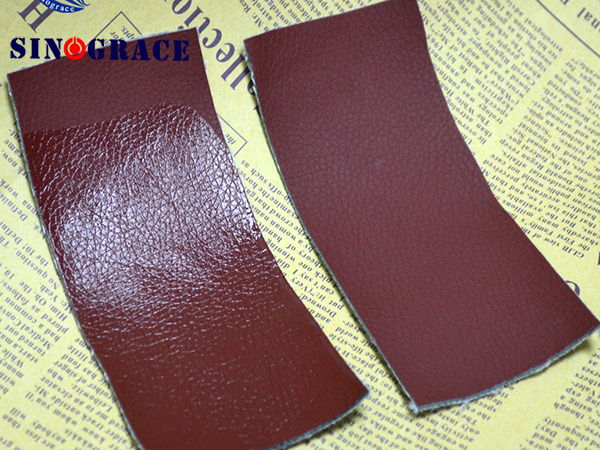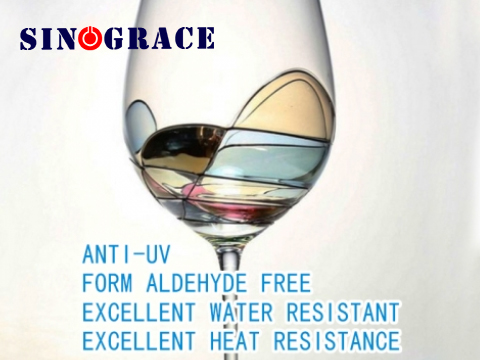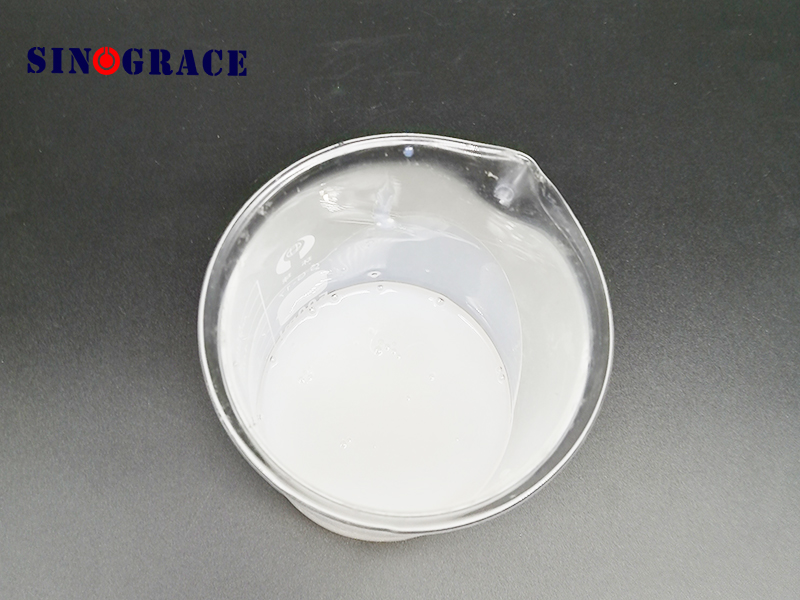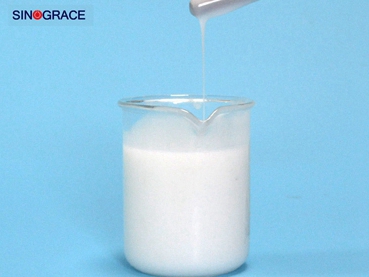- Home
- About Us
- Products
- News
- Contact Us

2024-10-10
Leather finishing is generally divided into three parts:Primer coat, middle coat, and topcoat.Primer requires strong adhesion, hiding power, good embossing formability and stereotyping, and the middle coating further covers and modifies the color, and finally achieves the visual and physical performance requirements through the topcoat.With a specific topcoat, the effect of extinction or light can be created. Waterborne polyurethane resin is the main material commonly used in leather coating. Its film forming performance is good, the bond is firm, and the coating has the characteristics of high wear resistance, high elasticity, water resistance, weather resistance, cold resistance, chemical resistance and so on.After finishing, the finished leather feels full and comfortable, which improves the grade of the finished leather and plays a role in protecting the leather. In order to meet customers' pursuit of quality and meet the most stringent environmental requirements,SinograceChemical launched two single-component waterborne polyurethanes, which are polymerized from aliphatic isocyanates.Excellent adhesion, good adhesion resistance, comfortable feel, no yellowing, good weather resistance. The products are widely used in leather shoes, belts, sofas and luggage leather and other leather products. For leather top finish to provide excellent gloss and permeability, excellent wear resistance and weather resistance. If you want to know more about Water-based polyurethane topcoat for leather information, or need samples, please contact us. Contact Us mailbox:sales@sinogracechem.com
read more
2024-10-09
water base varnish for glass Does not contain benzene, esters and other harmful solvents, does not contain free TDI, does not burn, is the latest environmental protection glass process paint, by the international and other authoritative verification institutions assessed as the real green environmental protection products. Solve problems It is required to blister at 75℃ for 30 minutes and it is required to be dense. Soak in ethanol for 48 hours without fading. Water-based glass paint is a water-based varnish used on glass substrates. At present, there are single-component self-drying type, single-component baking type, two-component self-drying type. Single-component self-drying type is prepared by water-based polyurethane emulsion and adhesion enhancer; The one-component baked type is prepared by emulsion containing -OH or carboxyl group and water-dilutive amino resin; The principle corresponds to oil-based baking paint. The two-component self-drying type is composed of water-based epoxy resin plus binary amines, etc., and the principle corresponds to the two-component self-drying paint, such as epoxy floor paint, two-component PU paint, etc. Pure water-based glass paint belongs to glass base varnish. What is the difference between water-based glass varnish and oil-based glass varnish? 1.Water-based glass varnish water as a diluent, and oily glass paint generally use banana oil (banana water) to do diluent, everyone knows that banana oil (banana water) is toxic, from this point of view water-based glass paint is more environmentally friendly and safe than oily glass paint, and when cleaning the spray gun and mold with water-based glass paint, you can clean it with water. And the use of oil-based glass paint, usually use the water (banana water) to clean the spray gun and the like. 2. The aging resistance of water-based glass varnish is stronger than that of oil-based glass varnish. 3.In terms of adhesion, water-based glass varnish is better than oil-based glass paint. 4. Water is more expensive than oil. Sinograce Chemical production for glass ink resin, applied to various types of glass, high hardness, good wear resistance, uv resistance, good water resistance, good adhesion.
read more
2024-09-30
Water-based coatings, acrylic resins are commonly used resins that can not be avoided, commonly used metal coatings, ABS, PC coatings, glass coatings that require hardness, most of them will be applied to acrylic resins, especially solid acrylic resins. There are many varieties of solid acrylic resins, and some solid acrylic resins can be used to produce water-based paints, including the popular light-curable UV radiation coatings and high-solid coatings. With the enhancement of people's environmental awareness, water-based coatings must be the mainstream. Advantages of solid acrylic resin The cost of storage and transportation is low and the safety is good Most solid acrylic resins take methacrylate as the main monomer, and its weather resistance and chemical resistance are better than that of acrylic monomer and styrene. It has good promotion value in external architectural coatings, container and automobile repair paint. Acrylic resin Since some types of solid acrylic resins can be used as water-based UV-curable paints and high-solid paint, adjusting monomers can produce low pollution and light odor acrylic architectural coatings for external use, solid acrylic resins help the coating industry to develop low pollution coatings. Domestic solid acrylic resin has been mass-produced, in some properties, such as dissolution rate, weather resistance and imported resin has the same effect, for the promotion of acrylic paint is making new contributions. Slicone modified acrylic resin In addition, silicone modified acrylate resins are also at the forefront of development, because they can be used in the automotive industry for elastic topcoats and general purpose primers. Organosilicon modified acrylate coating is a kind of coating with excellent properties, which introduces organosilicon polymer into acrylate structure by reaction. The silicone chlorane-acrylic resin coating has good properties and excellent adhesion to non-ferrous metals and various plastics. Sinograce Chemical 20 years of service water based coating customers, corresponding to different substrate needs, there are corresponding water based acrylic resin products, consulting three liters customer service+8615755193346 can consult more product information, obtain technical guidance.
read more
2024-09-27
Compared with solvent-based acrylic paint, the paint made of water-based acrylic resin has the advantages of stability, safe use, environmental protection, reducing environmental pollution and saving resources! At present, it has become an important development direction of the coating industry. The coating using water-based acrylic resin is a low-pollution or even pollution-free environmental protection coating with faster development and more varieties of water-based coatings. At present, the water-based acrylic coatings on the market are basically the following three kinds: 1 Emulsion acrylic resin coating It is made of acrylic monomer through emulsion polymerization, appearance milky white, large particle size. Advantages: Low VOC, low price, good chemical resistance Disadvantages: Luster, poor leveling, difficult to do high-grade paint. Poor stability. 2 acrylic dispersion type paint It is a solvent-based resin made of high solid and low bonding acrylic monomer, and a water-based coating made of water-based resin after amination into salt. It is generally made of two-component PU coating or baking coating. The appearance is usually translucent liquid Advantages: VOC general, fullness, luster is better. Disadvantages: relatively troublesome construction and high paint cost. 3 Water-soluble acrylic paint It is a water-based coating made of a resin synthesized by acrylic monomer in a water-soluble solvent and a water-soluble resin formed by amination into salt. Transparent yellowish liquid in appearance. Advantages: Wide molecular weight range, can be made of water-based coatings diversification. Disadvantages: high VOC, relatively poor chemical resistance. After years of research and development, Anhui Sinograce Chemical Co., Ltd.has developed an ultra-low VOC water-soluble acrylic resin, which has an extremely low odor. The VOC content is only 4.3g/kg resin (provided by a third-party testing agency), which is not only far lower than the VOC content of emulsion, but also far lower than the standard. Environmental protection is becoming increasingly severe, and it is a new choice for paint practitioners.
read moreCopyright © 2015-2025 Anhui Sinograce Chemical Co., Ltd..All Rights Reserved.powered by dyyseo.com
top